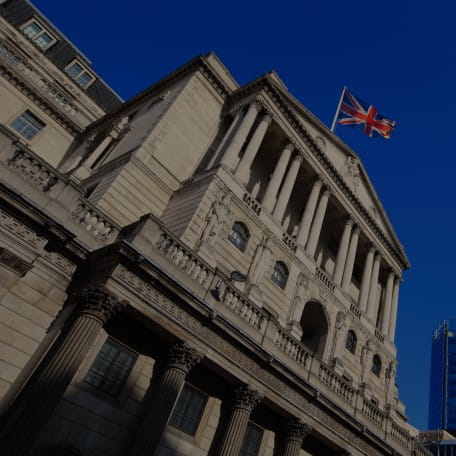The concept of ‘shrinkflation’ cropped up again this week after a US lawsuit alleged that Burger King Whopper adverts misled customers into thinking the burger would be 35% larger than it actually is. While this could easily be filed alongside ‘greedflation’ as an unpleasant manifestation of the cost-of-living crisis, its actually a trend that stretches further back.
For the last two years, the cost-of-living crisis has been an ever-present theme for consumers and companies, infiltrating chat boards, personal finance pages and annual reports – so much so that 2023 has seen the emergence of the cringe-inducing abbreviation to “cozzie livs”.
Earlier this year, with consumer price inflation running at double-digit rates and food inflation hitting 15%, we touched on the concept of greedflation – the idea that some companies may be using this inflationary backdrop as an excuse to expand profit margins.
The greedflation theory goes that consumers are so familiar with rising costs that they will not question price hikes in some goods, allowing companies to increase their prices at a faster rate than their input costs demand – thereby sneakily increasing profit margins.
While this could work in the very short term, it seems likely that consumers are too savvy for it to pay off as a strategy for very long. Cost-conscious consumers have previously proven alive to another potential trick from producers of goods: ‘shrinkflation’.
Shrinkflation as a term has been bandied around for a few years now and relates to the idea that goods producers will deal with inflation not through price rises, but by reducing product sizes and maintaining prices.
One of the least successful attempts at an under-the-radar size alteration came from Mondelez, which hit the headlines a few years ago after it reduced the standard size of its Toblerone bars by introducing larger spaces between smaller triangles of chocolate.
The trend gained attention in the UK after the 2016 Brexit vote pushed companies such as Mondelez to look for creative ways to deal with a sharp fall in the value of the pound and a consequent rise in the cost of importing ingredients.
In reality, companies aren’t malevolent forces out to swindle their customers out of hard-earned cash, and the ones that are won’t last very long. Higher prices are the market mechanism by which an imbalance between supply and demand is rectified – be it through surging demand in ‘demand-pull’ inflation or a ‘cost-push’ effect caused by a shortage of goods of the type we have seen in the UK labour market since Brexit and in the global energy market in the immediate aftermath of Russia’s invasion of Ukraine.
In the vast majority of cases, rising prices or shrunken product sizes are attempts by companies to deal with rising costs and protect profit margins – not to greedily create extra profit margins.
Instead, the discourse around greedflation and shrinkflation highlights one of the ways in which high levels of inflation can be economically damaging: menu costs. This is a simple term that reflects the theoretical inflation costs borne by a business that needs to repeatedly reprint its menus in an inflation environment to account for higher costs and prices. More broadly, it can be seen as a catch-all term to reflect the frictions and incremental costs incurred by businesses and consumers in an environment when prices rise frequently and there is low certainty about future price levels.
Costs such as these are one of the reasons central bankers are usually mandated to keep price inflation at a low and stable rate. As demand rebounded when economies emerged from Covid lockdown measures in 2021, many feel key central bankers were too slow to respond to increases in prices, which they initially labelled as merely transitory.
Global Fixed Income fund manager Phil Milburn was one of those critical of most developed market central bankers:
“The crux of the problem is that developed world monetary policy was kept too loose for too long and a blind eye was turned toward inflation. As it became clear that inflation was not transitory, rates had to be hiked higher than they otherwise would have. Exogenous events, such as last year’s energy price crisis, are beyond central bankers’ control. But the monetary policy tightening journey would have been so much smoother and less painful for mortgage seekers and others if it had been started before inflation became embedded in expectations.”
Although it has fallen from last year’s October peak of 11.1%, consumer price inflation remains high, with the latest data showing a 6.8% annual increase through to July.
For now, investors have to contend with an immediate environment of high inflation and high interest rates, albeit one in which Imran Sattar of the Global Fundamental Team thinks still contains plenty of attractive UK equity investment opportunities.
Looking a little further ahead, consensus economic forecasts see UK inflation roughly halving next year to about 3%, much closer to the Bank of England’s 2% target and within the 1% tolerance range that would allow BoE governor Andrew Bailey a break from his monthly letters of explanation to the chancellor.
The question then becomes: at what cost was inflation brought under control? In order to fight price rises, the Bank has had to hike rates into contractionary territory, meaning that the short-term UK economic growth outlook is fairly anaemic – forecasts are for 0.3% this year and 0.4% in 2024 before a small recovery to 1.5% in 2025.
While inflation should soon be low enough to prevent any more painful portmanteaus being coined, there may be other economic challenges lying in wait.
KEY RISKS
Past performance is not a guide to future performance. The value of an investment and the income generated from it can fall as well as rise and is not guaranteed. You may get back less than you originally invested.
The issue of units/shares in Liontrust Funds may be subject to an initial charge, which will have an impact on the realisable value of the investment, particularly in the short term. Investments should always be considered as long term.
Investment in funds managed by the Global Fundamental Team may involve investment in smaller companies. These stocks may be less liquid and the price swings greater than those in, for example, larger companies. Some of the funds may hold a concentrated portfolio of stocks, meaning that if the price of one of these stocks should move significantly, this may have a notable effect on the value of that portfolio. Investment in the funds may involve foreign currencies and may be subject to fluctuations in value due to movements in exchange rates. Some of the funds may invest in emerging markets/soft currencies and in financial derivative instruments, both of which may have the effect of increasing volatility.
Investment in Funds managed by the Global Fixed Income team involves foreign currencies and may be subject to fluctuations in value due to movements in exchange rates. The value of fixed income securities will fall if the issuer is unable to repay its debt or has its credit rating reduced. Generally, the higher the perceived credit risk of the issuer, the higher the rate of interest. Bond markets may be subject to reduced liquidity. The Funds may invest in emerging markets/soft currencies which may have the effect of increasing volatility. Some of the Funds may invest in derivatives. The use of derivatives may create leverage or gearing. A relatively small movement in the value of a derivative's underlying investment may have a larger impact, positive or negative, on the value of a fund than if the underlying investment was held instead.
DISCLAIMER
This is a marketing communication. Before making an investment, you should read the relevant Prospectus and the Key Investor Information Document (KIID), which provide full product details including investment charges and risks. These documents can be obtained, free of charge, from www.liontrust.co.uk or direct from Liontrust. Always research your own investments. If you are not a professional investor please consult a regulated financial adviser regarding the suitability of such an investment for you and your personal circumstances.
This should not be construed as advice for investment in any product or security mentioned, an offer to buy or sell units/shares of Funds mentioned, or a solicitation to purchase securities in any company or investment product. Examples of stocks are provided for general information only to demonstrate our investment philosophy. The investment being promoted is for units in a fund, not directly in the underlying assets. It contains information and analysis that is believed to be accurate at the time of publication, but is subject to change without notice. Whilst care has been taken in compiling the content of this document, no representation or warranty, express or implied, is made by Liontrust as to its accuracy or completeness, including for external sources (which may have been used) which have not been verified. It should not be copied, forwarded, reproduced, divulged or otherwise distributed in any form whether by way of fax, email, oral or otherwise, in whole or in part without the express and prior written consent of Liontrust.










